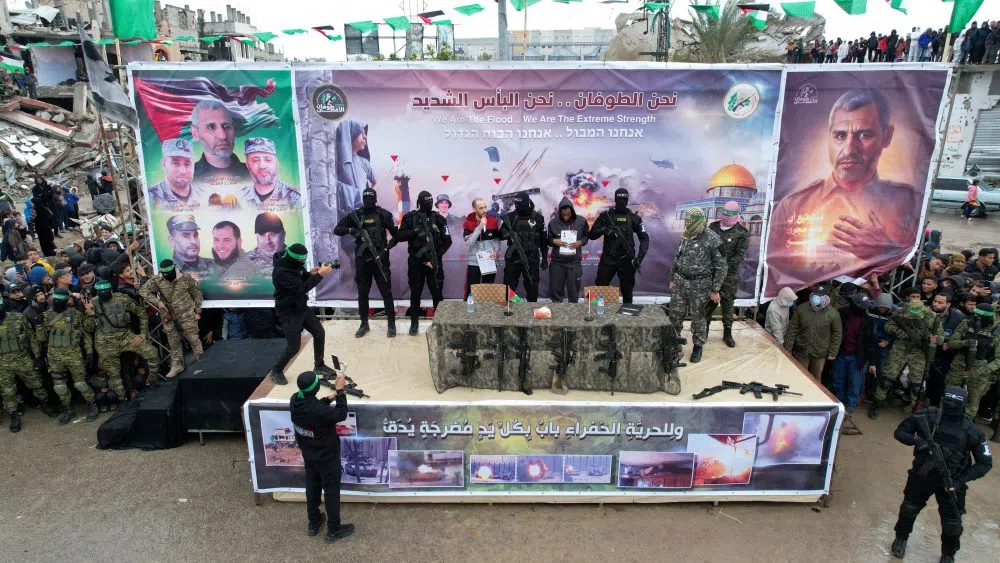Hamas released six Israeli hostages on Saturday in the final exchange under the first phase of a ceasefire agreement, trading them for hundreds of Palestinian prisoners and detainees.

Eliya Cohen, 27, Omer Shem Tov, 22, and Omer Wenkert, 23—captured during Hamas’ October 7, 2023, attack on southern Israel—were handed over to the Red Cross in Nuseirat, central Gaza. They were then transferred to Israeli forces. Hamas militants, armed with automatic rifles, flanked the three men during the handover, which took place before a gathered crowd.
Earlier, Tal Shoham, 40, and Avera Mengistu, 39, were released in Rafah, southern Gaza. A sixth hostage, Hisham Al-Sayed, 36, was later handed over to the Red Cross in Gaza City without a public ceremony.
Mengistu and Al-Sayed had been held by Hamas for nearly a decade after entering Gaza on their own. Shoham was abducted from Kibbutz Be’eri with his wife and two children, who were freed in a brief truce in November 2023.
The six hostages were the last living captives among the 33 scheduled for release under the initial phase of the ceasefire, which took effect on January 19. An estimated 63 additional hostages remain in Gaza, though fewer than half are believed to be alive.
Following his release, Shem Tov embraced his parents, laughing and crying, saying, “How I dreamt of this,” in a video shared by the Israeli military. Shoham, smiling and giving a thumbs-up, waved to friends gathered outside the hospital where he was taken.
Hundreds of Israelis braved the rain at Hostages Square in Tel Aviv, lighting candles beneath photos of the Bibas family, whose bodies were recently returned.
In exchange for the hostages, Israel is expected to release 602 Palestinian prisoners, including 445 Gazans detained by Israeli forces during the war. The exchange also includes dozens of individuals serving lengthy sentences for attacks that killed Israelis during the Palestinian uprising two decades ago.
The ceasefire was briefly jeopardized after Hamas misidentified a body returned Thursday as that of Shiri Bibas, who was kidnapped with her two young sons and husband in the October 7 attack. Late Friday, Hamas handed over another body, which Israeli forensic officials confirmed as hers.
The Israeli military stated that intelligence assessments and forensic analysis concluded that 10-month-old Kfir Bibas and his four-year-old brother, Ariel, were deliberately killed by their captors. Army Radio reported that Shiri Bibas was likely killed alongside her children. Hamas, however, claims the family died in an Israeli airstrike.
While the ceasefire has paused hostilities, the prospects for a lasting peace remain uncertain. Hamas has sought to assert control in Gaza despite significant losses.
The conflict began when Hamas militants launched an attack on Israeli communities, killing 1,200 people and taking 251 hostages, according to Israeli authorities. In response, Israel’s military campaign has killed at least 48,000 people, according to Palestinian health officials, and devastated much of Gaza, leaving hundreds of thousands displaced.
Both sides have signaled interest in negotiating a second phase of the ceasefire, which mediators say would focus on securing the release of remaining hostages and the withdrawal of Israeli forces from Gaza.



